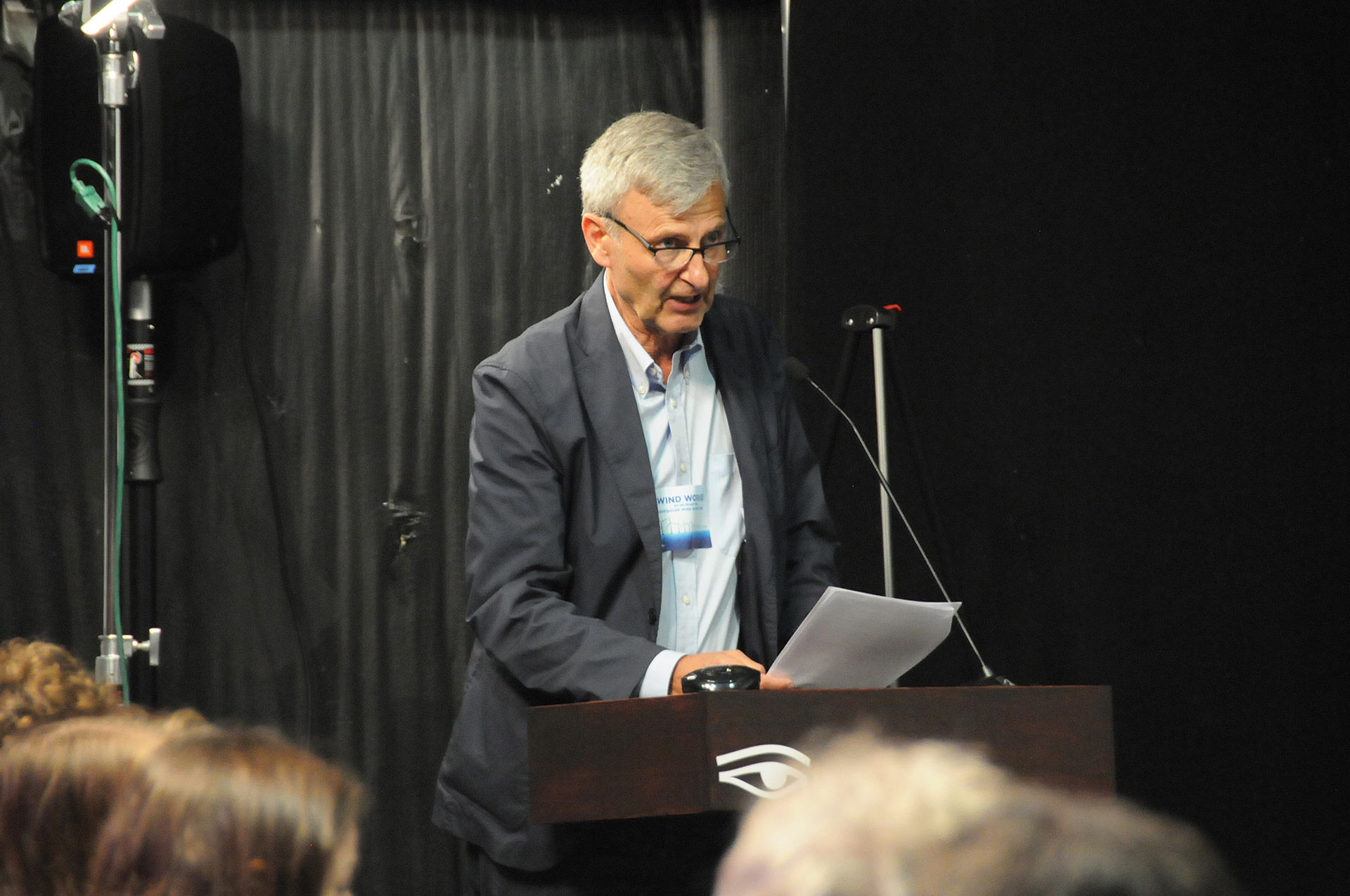Consultant Denies Pay To Say Allegations

To Gordian Raacke, a suggestion that he trades testimony in exchange for payment isn’t fake news – it’s no news.
Raacke is executive director of Renewable Energy Long Island, a not-for-profit organization working to accelerate the transition to 100 percent renewable energy systems.
“To imply my advice is biased, to imply something is fishy, is silly. My work is driven by conviction. I have a 26-year record,” he said emphatically.
He was asked to respond to a missive circulated by Si Kinsella, an opponent of Ørsted (which recently acquired Deepwater Wind), specifically its plan to bring a cable from offshore wind generators into Wainscott.
Raacke is a vocal proponent of the South Fork Wind Farm and has spoken on the company’s behalf at almost every public hearing and meeting on the matter.
Kinsella claims that when Raacke chaired East Hampton Town’s Energy Sustainability Committee, he championed policies advanced by the Long Island Power Authority for the same reason: money.
As chairman, Raacke was asked to review and advise the town board on policies, programs, and issues promoting energy efficiency and environmental sustainability.
“The problem was that in 2013 alone, Gordian Raacke was paid at least $150,000 by LIPA while at the same time serving as Chairman of the Energy Sustainability Committee,” Kinsella charged. “Payments were made via a tax-exempt 501(c)3 corporation called Renewable Energy Long Island, Inc. (‘Renewable LI’). Gordian Raacke was its Executive Director and sole salaried employee.”
In 2013, for example, LIPA paid $303,012 to Renewable LI and largely out of that, Renewable LI paid Raacke $166,388. LIPA’s tax-free total contribution represented 92 percent of all contributions to Renewable LI that year.
A contract between LIPA and Renewable LI was approved on March 29, 2012 for $1.5 million, according to Kinsella.
Raacke did not deny the numbers. “They come from the tax returns. I assume they are accurate,” he said. “Renewable Energy had a contract with LIPA. It’s not something we were hiding. It was on our website.”
In May of 2018, Raacke was harshly criticized at a public hearing about Deepwater, which was held by the LIPA board to address power peak hour outage shortages on the East End.
East Hampton Town Supervisor Peter Van Scoyoc, who moderated the event, called Raacke to the podium, one of 40 or so speakers.
Rick Drew, deputy clerk of the East Hampton Town Trustees, strongly objected. “He is a paid advocate. He is paid by LIPA. He’s paid by Deepwater.” “I’m disappointed in you, Rick,” Van Scoyoc said.
Raacke disputed other speakers who stated the energy generated by Deepwater would be sold at premium prices to the East End. “We have enough data to know what it will do to our electric rates,” he said.
Kinsella said on the contrary, Raacke steered the town away from a better and cheaper path that would have more efficiently made use of alternative power sources.
“In 2015, the town proposed building a network of distributed solar panels and batteries to support [electrical] service to about 100 commercial and industrial facilities and about 3200 residential customer accounts, including two water authority pumping stations and the Springs Fire District facility,” Kinsella wrote.
“At the time, it was estimated to cost $40 million to build and operate over 20 years. Today, the estimated cost would be from $250 to 300 million for the entire town to run on solar energy with battery storage.”
By way of comparison, Deepwater’s South Fork Wind Farm will cost $2.6 billion, according to estimates and in Kinsella’s words, “may fail to generate power during peak demand in the summer.”
“Why did the Energy Sustainability Committee suddenly drop a potentially cheaper and more suitable distributed solar/battery option, preferring instead Deepwater Wind?” Kinsella asked.
Raacke acknowledged the Deepwater power will come at a hefty price. “But East Hampton ratepayers won’t bear the full load,” Raacke said, noting the cost of the wind-generated power will be spread across the entire PSEG customer base. “It will have a minimal impact on our bills. Furthermore, wind power down the road will come at a much cheaper price.”
Renewable LI’s executive director acknowledged East Hampton Town should do more “to support solar” — there is only one significant solar farm, Accabonac, which only recently began producing, with great fanfare. Though Van Scoyoc opined, “We are not lagging behind other towns, we are leading,” East Hampton’s commitment to alternate energy has been slow materializing.
In 2014, the town set a goal of meeting 100 percent of community-wide electricity needs with renewable energy sources by 2020. “That’s obviously not going to happen,” Raacke said. But he blanched at Kinsella’s suggestion he steered the town away from solar and toward wind-driven energy. “It’s an advisory committee. Even if I wanted to do that, it’s up to the town board,” he added.
Not to worry. The town has an Orwellian solution for not meeting the 2020 deadline — erase it. “Five years ago, the Town of East Hampton adopted a goal of meeting 100 percent of community-wide energy consumption needs with renewable energy sources by 2030,” read a recent press release, adding 10 years to the timeline.
rmurphy@indyeastend.com



